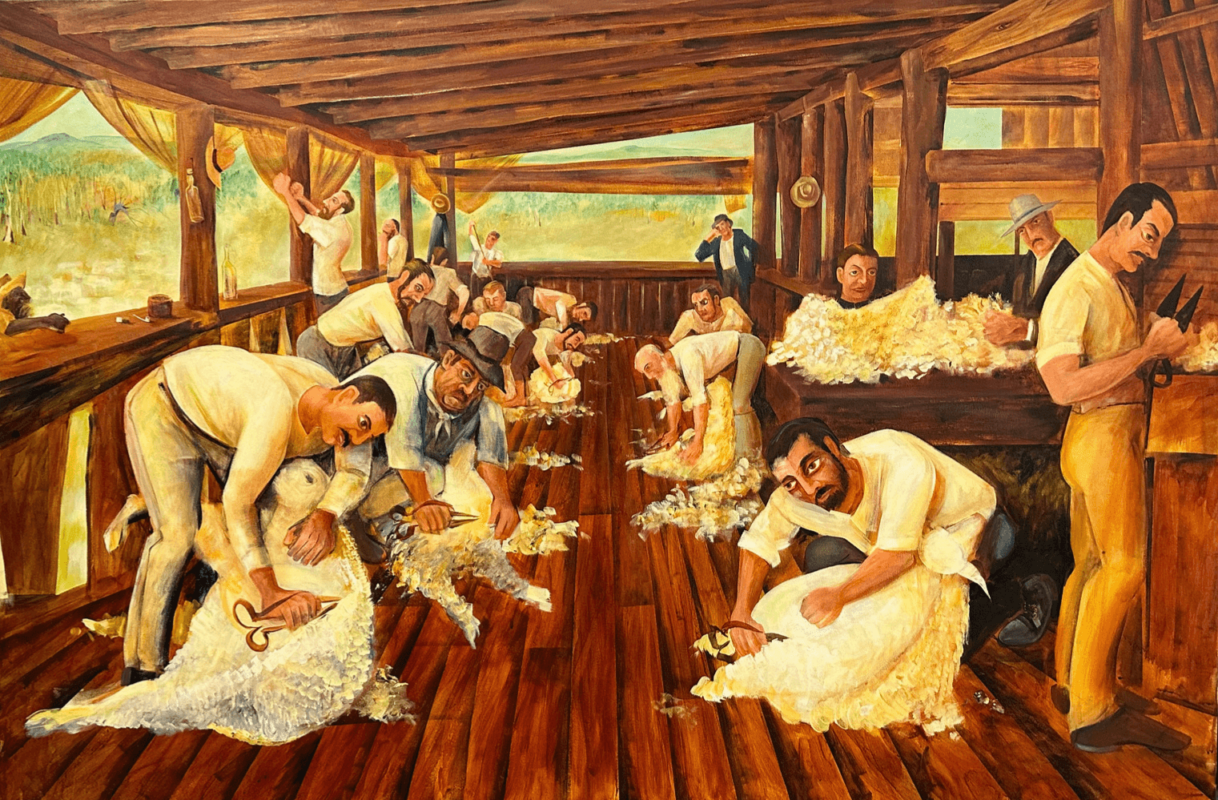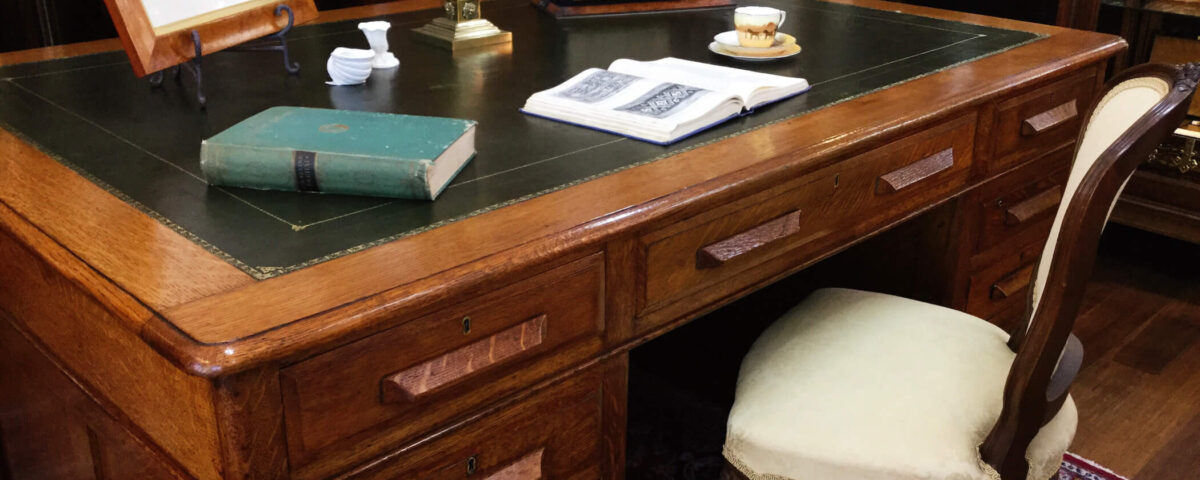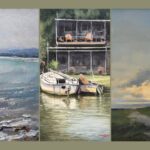
Land, Spirit, People, Sport. An Australiana art exhibition by Victor Rubin.
08/03/2023Valentine’s Antique Gallery Buying Guide; Antique Furniture

Antique buying guide shop at Valentines Antiques
At Valentine’s Antiques Gallery we use many terms and expressions that are synonymous with our trade. Here is a helpful guide to help you navigate some of these terms and periods that we use when describing some of our furniture.
Furniture styles can be determined by careful study and remembering what design elements each one embraces. To help understand what defines each period, here are some of the major design elements for each period.
William and Mary, 1690-1730
The style is named for the English King William of Orange and his consort, Mary. New colonists in America brought their English furniture traditions with them and tried to translate these styles using native woods.
Their furniture was practical and sturdy. Lines of this furniture style tend to be crisp, while facades might be decorated with bold grains of walnut or maple veneers, framed by inlaid bands. Moldings and turnings are exaggerated in size. Turnings are baluster-shaped and the use of C-scrolls was quite common. Feet found in this period generally are round or oval. One exception to this is known as the Spanish foot, which flares to a scroll.
Woods tend to be maple, walnut, white pine or southern yellow pine. One type of decoration that begins in the William and Mary period and extends through to Queen Anne and Chippendale styles is known as “japanning,” referring to a lacquering process that combines ashes and varnish.
Queen Anne, 1720-1760
Evolution of this design style is from Queen Anne’s court, 1702 to 1714, and lasted until the Revolution. This style of furniture is much more delicate than its predecessor. It was one way for the young Colonists to show their own unique style, with each regional area initiating special design elements.
Forms tend to be attenuated in New England. Chair rails were more often mortised through the back legs when made in Philadelphia. New England furniture makers preferred pad feet, while the makers in Philadelphia used triffid feet. Makers in Connecticut and New York often preferred slipper and claw and ball feet.
The most popular woods were walnut, poplar, cherry, and maple. Japanned decoration tends to be in red, green and gilt, often on a blue-green field. A new furniture form of this period was the tilting tea table.
Chippendale, 1755-1790
This period is named for the famous English cabinetmaker, Thomas Chippendale, who wrote a book of furniture designs, Gentlemen and Cabinet-Maker’s Director, published in 1754, 1755 and 1762.
This book gave cabinetmakers real direction and they soon eagerly copied the styles presented. Chippendale was influenced by ancient cultures, such as the Romans, and Gothic influences.
Look for Gothic arches, Chinese fretwork, columns, capitals, C-scrolls, S-scrolls, ribbons, flowers, leaves, scallop shells, gadrooning and acanthus leaves.
The most popular wood used in this period was mahogany, with walnut, maple and cherry also present. Legs become straight and regional differences still existed in design elements, such as feet. Claw and ball feet become even larger and more decorative.
Pennsylvania cabinetmakers used Marlborough feet, while other regions favoured ogee bracket feet. One of the most popular forms of this period was a card table that sported five legs instead of the four of Queen Anne designs.
Federal (Hepplewhite), 1790-1815
This period reflects the growing patriotism felt in the young American states. Their desire to develop their own distinctive furniture style was apparent. Stylistically it also reflects the architectural style known as Federal, where balance and symmetry were extremely important.
Woods used during this period were mahogany and mahogany veneer, but other native woods, such as maple, birch or satinwood, were used. Reflecting the architectural ornamentation of the period, inlays were popular, as was carving and even painted highlights. The motifs used for inlay included bellflowers, urns, festoons, acanthus leaves and pilasters, to name but a few. Inlaid bands and lines were also popular and often used in combination with other inlay.
Legs of this period tend to be straight or tapered to the foot. The foot might be a simple extension of the leg, or bulbous or spade shaped. Two new furniture forms were created in this period. They are the sideboard and the worktable. Expect to find a little more comfort in chairs and sofas, but not very thick cushions or seats.
When a piece of furniture is made in England, or styled after an English example, it may be known as Hepplewhite. The time frame is the same. Robert Adam is credited with creating the style known as Hepplewhite during the 1760s and leading the form. Another English book heavily influenced the designers of the day. This one was by Alice Hepplewhite, and titled The Cabinet Maker and Upholsterer’s Guide, published in 1788, 1789 and 1794.
Sheraton, 1790-1810
The style known as Sheraton closely resembles Federal. The lines are somewhat straighter and the designs plainer than Federal. Sheraton pieces are more closely associated with rural cabinetmakers.
Woods would include mahogany, mahogany veneer, maple and pine, as well as other native woods.
This period was heavily influenced by the work of Thomas Sheraton and his series of books, The Cabinet Maker and Upholsterer’s Drawing Book, from 1791-1794, and his The Cabinet Directory, 1803, and The Cabinet-Maker, Upholsterer, and General Artist’s Encyclopedia of 1804.
Empire (Classical), 1805-1830
By the beginning of the 19th century, a new design style was emerging. Known as Empire, it had an emphasis on the classical world of Greece, Egypt and other ancient European influences.
The American craftsmen began to incorporate more flowing patriotic motifs, such as eagles with spread wings. The basic wood used in the Empire period was mahogany. However, during this period, dark woods were so favored that often mahogany was painted black. Inlays were popular when made of ebony or maple veneer.
The dark woods offset gilt highlights, as were the brass ormolu mountings often found in this period. The legs of this period are substantial and more flowing than those found in the Federal or Sheraton periods.
Feet can be highly ornamental, as when they are carved to look like lion’s paws, or plain when they extend to the floor with a swept leg. Regional differences in this style are very apparent, with New York City being the center of the design style, as it was also the center of fashion at the time.
New furniture forms of this period include the sleigh bed, with the headboard and footboard forming a graceful arch. Several new forms of tables also came into being, especially the sofa table. Because the architectural style of the Empire period used big, open rooms, the sofa was now allowed to be in the center of the room, with a table behind it.
Former architectural periods found most furniture placed against the outside perimeter of the walls and brought forward to be used.
Victorian, 1830-1890
The Victorian period as it relates to furniture styles can be divided into several distinct styles. However, not every piece of furniture can be dated or definitely identified, so the generic term “Victorian” will apply to those pieces.
Queen Victoria’s reign affected the design styles of furniture, clothing and all sorts of items used in daily living. Her love of ornate styles is well known. When thinking of the general term, think of a cluttered environment, full of heavy furniture, and surrounded by plants, heavy fabrics and lots of china and glassware.
French Restoration, 1830-1850
This is the first sub-category of the Victoria era. This style is best simplified as the plainest of the Victorian styles. Lines tend to be sweeping, undulating curves. It is named for the style that was popular in France as the Bourbons tried to restore their claim to the French throne, from 1814 to 1848.
The Empire (Classical) period influence is felt, but French Restoration lacks some of the ornamentation and fussiness of that period. Design motifs continue to reflect an interest in the classics of Greece and Egypt. Chair backs are styled with curved and concave crest rails, making them a little more comfortable than earlier straight-back chairs.
The use of bolster pillows and more upholstery is starting to emerge. The style was only popular in clusters, but did entice makers from larger metropolitan areas, such as Boston and New Orleans, to embrace the style.
The Gothic Revival, 1840-1860
This is relatively easy to identify for collectors. It is one of the few styles that celebrates elements found in the corresponding architectural themes: turrets, pointed arches and quatrefoils—designs found in 12th through 16th centuries that were adapted to this mid-century furniture style.
The furniture shelving form known as an étagère was born in this period, allowing Victorians to have more room to display their treasured collections. Furniture that had mechanical parts was also embraced by the Victorians of this era.
The woods preferred by makers of this period were walnut and oak, with some use of mahogany and rosewood. The scale used ranged from large and grand to small and petite. Carved details gave dimension and interest.
Rococo Revival, 1845-1870
This design style features the use of scrolls, either in a “C” shape or the more fluid “S” shape. Carved decoration in the form of scallop shells, leaves and flowers, particularly roses, and acanthus further add to the ornamentation of this style of furniture.
Legs and feet of this form are cabriole or scrolling. Other than what might be needed structurally, it is often difficult to find a straight element in Rococo Revival furniture.
The use of marble for tabletops was quite popular, but expect to find the corners shaped to conform to the overall scrolling form. To accomplish all this carving, walnut, rosewood, and mahogany were common choices. When lesser woods were used, they were often painted to reflect these more expensive woods.
Some cast-iron elements can be found on furniture from this period, especially if it was cast as scrolls. The style began in France and England, but eventually migrated to America where it evolved into two other furniture styles, Naturalistic and Renaissance Revival.
Elizabethan, 1850-1915
This sub-category of the Victorian era is probably the most feminine-influenced style. It also makes use of the new machine-turned spools and spiral profiles that were fast becoming popular with furniture makers.
New technology advancements allowed more machined parts to be generated. By adding flowers, either carved or painted, the furniture pieces of this era had a softness to them. Chair backs tend to be high and narrow, having a slight back tilt. Legs vary from straight to baluster-turned forms to spindle turned.
This period of furniture design saw more usage of needlework upholstery and decoratively painted surfaces.
Louis XVI, 1850-1914
One period of the Victorian era that flies away with straight lines is Louis XVI. However, this furniture style is not austere; it is adorned with ovals, arches, applied medallions, wreaths, garlands, urns and other Victorian flourishes.
As the period aged, more ornamentation became present on the finished furniture styles. Furniture of this time was made from more expensive woods, such as ebony or rosewood.
Walnut was popular around the 1890s. Other dark woods were featured, often to contrast the lighter ornaments. Expect to find straight legs or fluted and slightly tapered legs.
Naturalistic, 1850-1914
This furniture period takes the scrolling effects of the Rococo Revival designs and adds more flowers and fruits to the styles. More detail is spent on the leaves—so much that one can tell if they are to represent grape, rose or oak leaves.
Technology advances enhanced this design style, as manufacturers developed a way of laminating woods together. This layered effect was achieved by gluing thin layers together, with the grains running at right angles on each new layer. The thick panels created were then steamed in molds to create the illusion of carving.
The woods used as a basis for the heavy ornamentation were mahogany, walnut and some rosewood. Upholstery of this period is often tufted, eliminating any large flat surface. The name of John Henry Belter is often connected with this period, for it was when he did some of his best design work.
John and Joseph W. Meeks also enjoyed success with laminated furniture. Original labels bearing these names are sometimes found on furniture pieces from this period, giving further provenance.
Renaissance Revival, 1850-1880
Furniture made in this style period reflects how cabinetmakers interpreted 16th- and 17th-century designs. Their motifs range from curvilinear and florid early in the period to angular and almost severe by the end of the period.
Dark woods, such as mahogany and walnut, were primary with some use of rosewood and ebony. Walnut veneer panels were a real favorite in the 1870s designs. Upholstery, usually of a more generous nature, was also often incorporated into this design style.
Ornamentation and high relief carving included flowers, fruits, game, classical busts, acanthus scrolls, strapwork, tassels and masks. Architectural motifs, such as pilasters, columns, pediments, balusters and brackets, are another prominent design feature. Legs are usually cabriole or have substantial turned profiles.
Néo-Greek, 1855-1885
This design style easily merges with both the Louis XVI and Renaissance Revival. It is characterized by elements reminiscent of Greek architecture, such as pilasters, flutes, column, acanthus, foliate scrolls, Greek key motifs and anthemion high-relief carving. This style originated with the French, but was embraced by American furniture manufacturers. Woods are dark and often ebonized. Ornamentation may be gilded or bronzed. Legs tend to be curved to scrolled or cloven hoof feet.
Eastlake, 1870-1890
This design style is named for Charles Locke Eastlake, who wrote a popular book in 1872 called Hints on Household Taste. It was originally published in London.
One of his principles was the relationship between function, form and craftsmanship. Shapes of furniture from this style tend to be more rectangular. Ornamentation was created through the use of brackets, grooves, chamfers and geometric designs.
American furniture manufacturers were enthusiastic about this style, since it was so easy to adapt for mass production. Woods used were again dark, but more native woods, such as oak, maple and pine, were incorporated. Legs and chair backs are straighter, often with incised decoration.
Art Furniture, 1880-1914
This period represents furniture designs gone mad, almost an “anything goes” school of thought. The style embraces both straight and angular with some pieces that are much more fluid, reflecting several earlier design periods.
This era saw the wide usage of turned mouldings and dark woods, but this time stained to imitate ebony and lacquer. The growing Oriental influence is seen in furniture from this period, including the use of bamboo, which was imported and included in the designs. Legs tend to be straight; feet tend to be small.
Arts & Crafts, 1895-1915
The Arts & Crafts period of furniture represents one of the strongest trends for current collectors. Quality period Arts & Crafts furniture is available through most of the major auction houses. And, for those desiring the look, good quality modern furniture is also made in this style.
The Arts & Crafts period furniture is generally rectilinear and a definite correlation is seen between form and function. The primary influences of this period were the Stickley brothers (especially Gustav, Leopold and John George), Elbert Hubbard, Frank Lloyd Wright and Harvey Ellis. Their furniture designs often overlapped into architectural and interior design, including rugs, textiles and other accessories.
Wood used for Arts & Crafts furniture is primarily oak. Finishes were natural, fumed or painted. Hardware was often made in copper. Legs are straight and feet are small, if present at all, as they were often a simple extension of the leg. Some inlay of natural materials was used, such as silver, copper and abalone shells.
Art Nouveau, 1896-1914
Just as the Art Nouveau period is known for women with long hair, flowers and curves, so is Art Nouveau furniture. The Paris Exposition of 1900 introduced furniture styles reflecting what was happening in the rest of the design world, such as jewelry and silver.
This style of furniture was not warmly embraced, as the sweeping lines were not very conducive to mass production. The few manufacturers that did interpret it for their factories found interest to be slight in America. The French held it in higher esteem. Legs tend to be sweeping or cabriole. Upholstery becomes slimmer.
Art Deco, 1920-1945
The Paris “L’Exposition International des Arts Décorative et Industriels Modernes” became the mantra for designs of everything in this period. Lines are crisp, with some use of controlled curves.
The Chrysler Building in New York City remains among the finest example of Art Deco architecture and those same straight lines and gentle curves are found in furniture. Makers used expensive materials, such as veneers, lacquered woods, glass and steel.
The cocktail table first enters the furniture scene during this period. Upholstery can be vinyl or smooth fabrics. Legs are straight or slightly tapered; chair backs tend to be either low or extremely high.
Modernism, 1940-present
Furniture designed and produced during the Modernism period is distinctive, as it represents the usage of some new materials, like plastic, aluminum and moulded laminates.
The Bauhaus and also the Museum of Modern Art heavily influenced some designers. In 1940, the museum organized competitions for domestic furnishings. Designers Eero Saarien and Charles Eames won first prize for their designs.
A new chair design combined the back, seat and arms together as one unit. Tables were designed that incorporated the top, pedestal and base as one. Shelf units were also designed in this manner.



